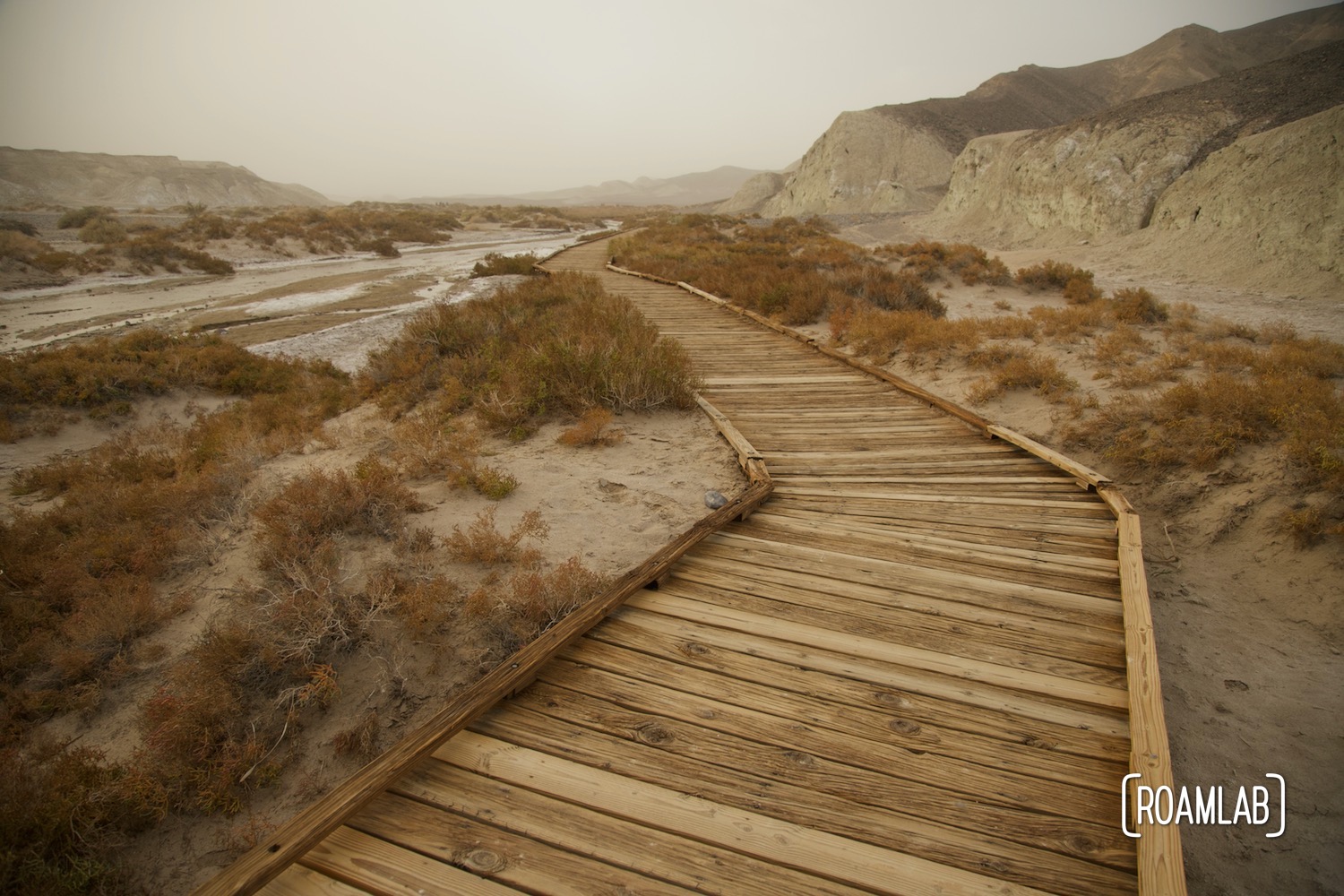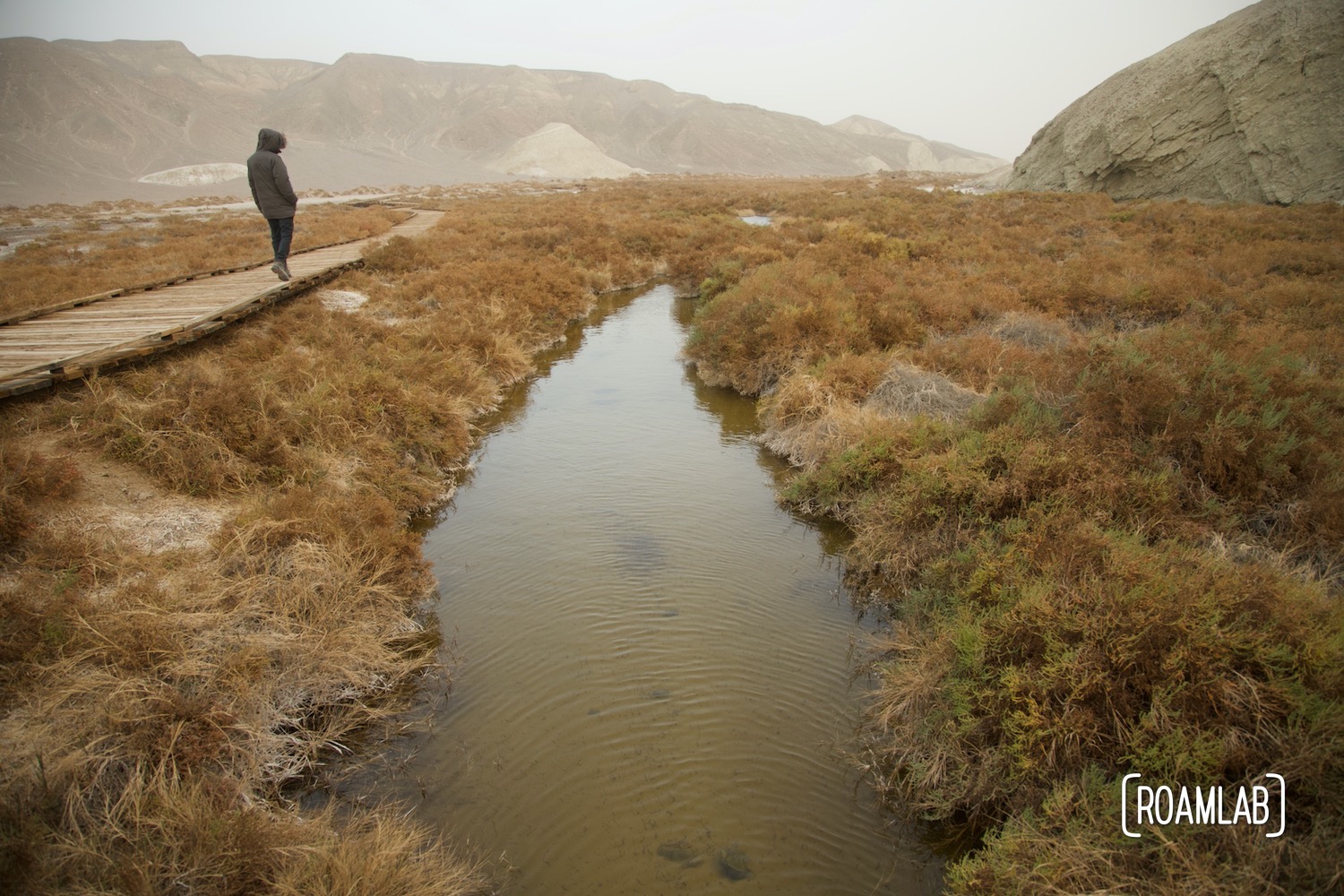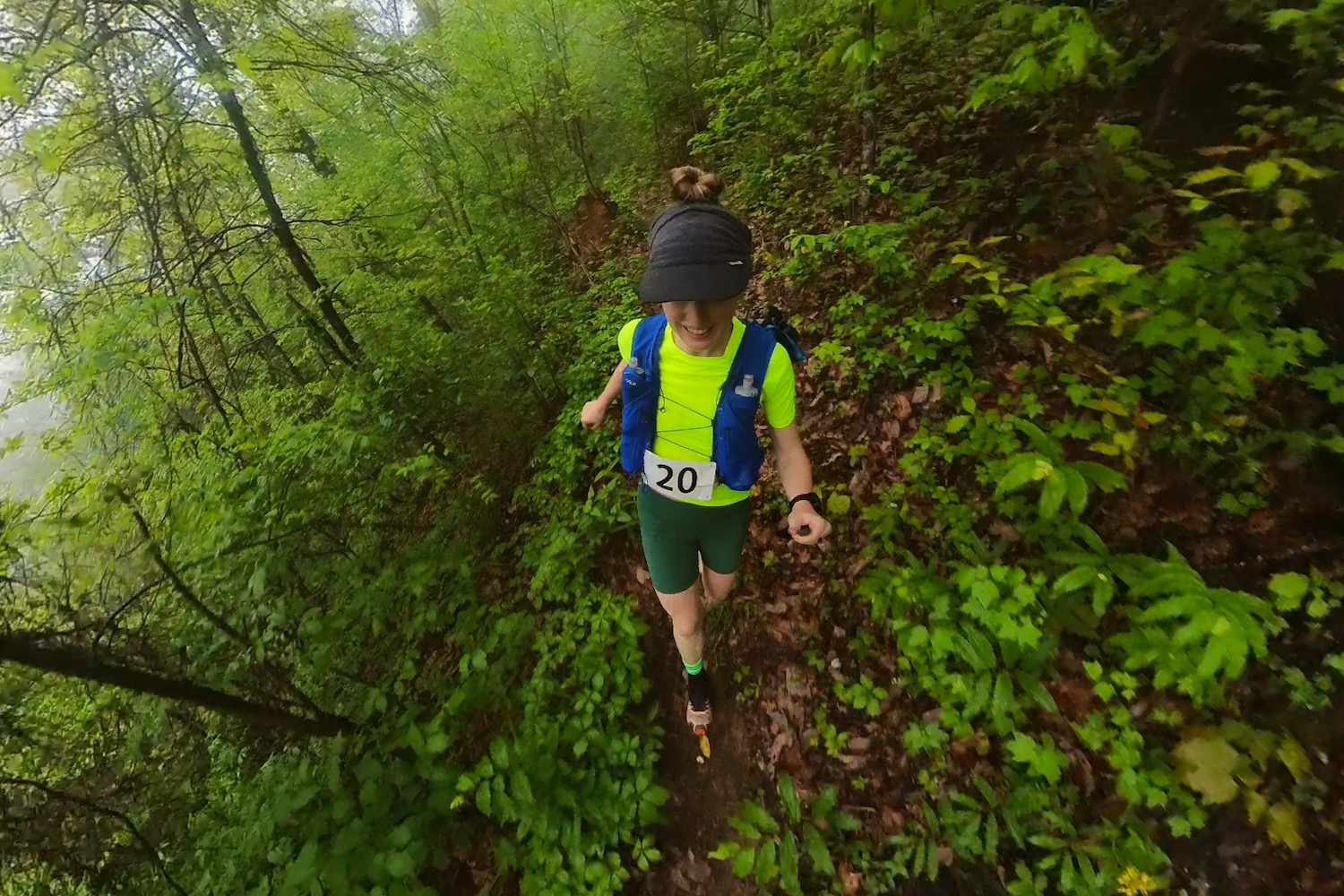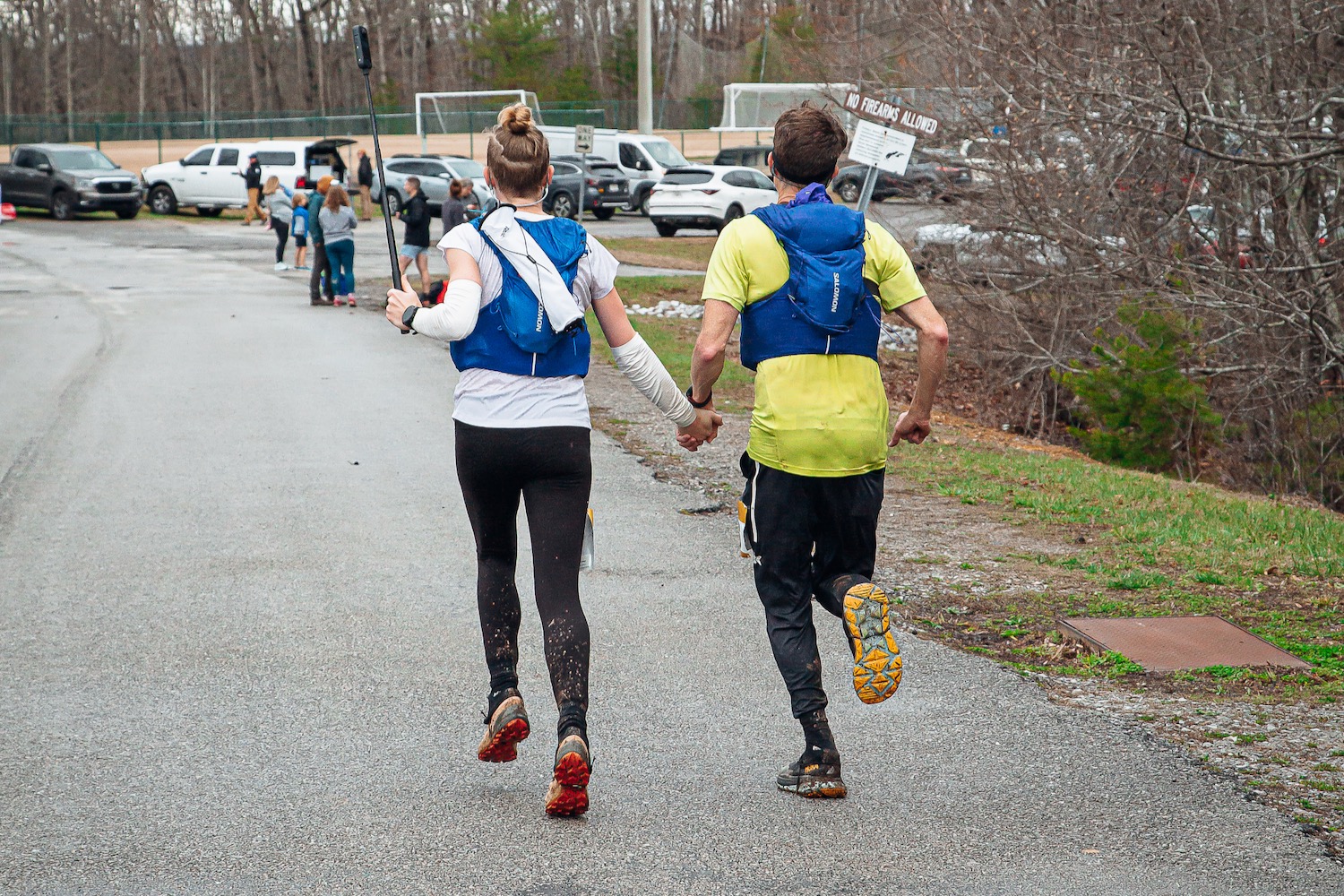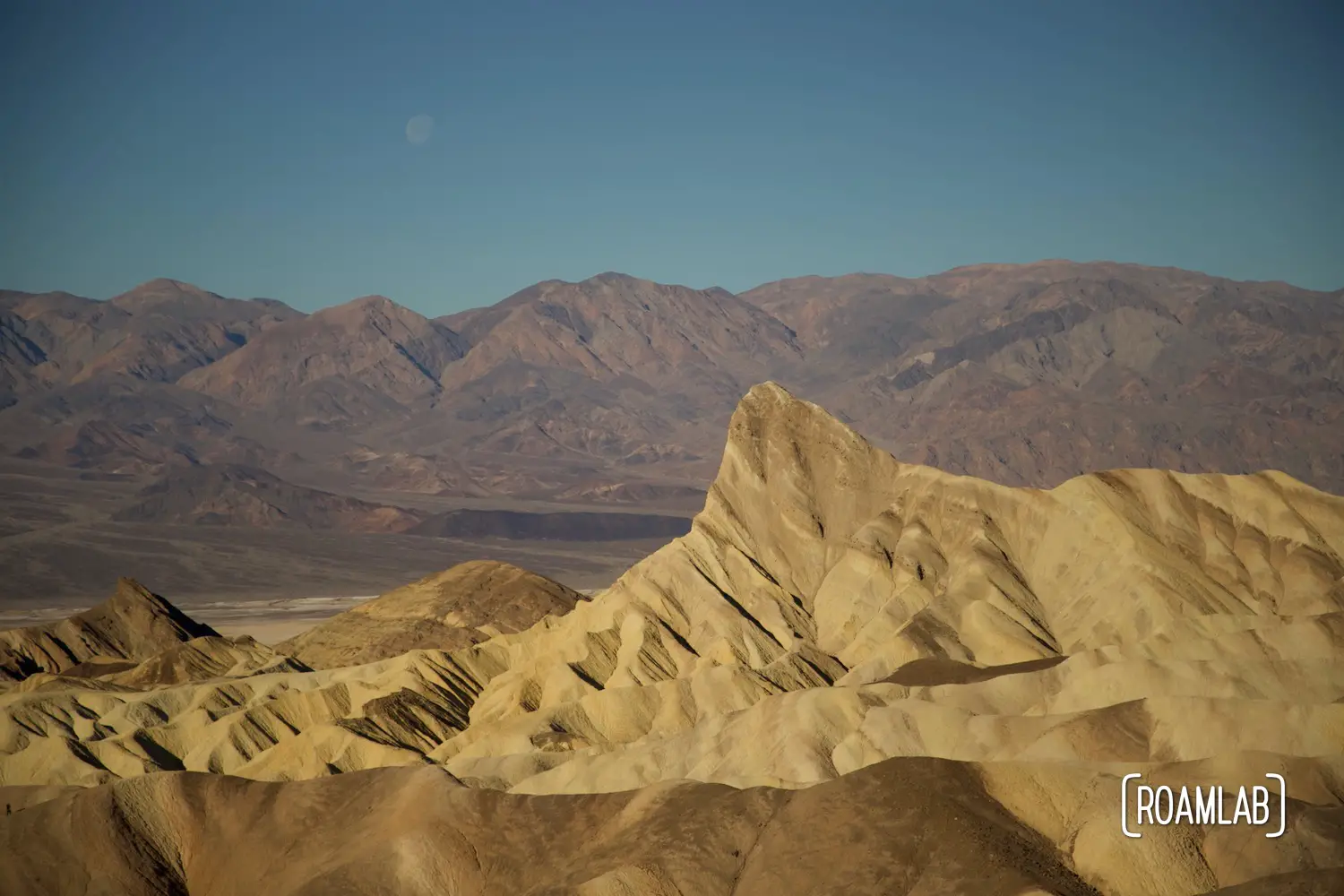
There’s no shortage of dramatic rock formations in Death Valley National Park. But one that is (arguably) the most iconic is Zabriskie Point. This striking structure rises out of ancient badlands older than Death Valley itself. It was formed by erosion of sediment left by Furnace Creek Lake when it dried up 5 million years ago, long before Lake Manly and Death Valley as we know it. Today, it is the gem of the Ameragosa Range, the eastern mountain range flanking Death Valley National Park

Geology
Zabriskie Point traces its origin millions of years before the land sank into the depression we know as Death Valley. Then, a different geographic depression was home to a different lake: Furnace Creek Lake. Geologists trace the origins of Furnace Creek Lake to 9 million years ago. While the climate at the time was dry, it was not nearly as dry as the region is today. We see fossilized tracks left by mastodons, camels, horses, and other ancient animals in the lake bed. What we know today as the Black Mountains was the Black Mountain volcanic field.
Over the several millions of years of this lake’s existence, the bed collected sediment from saline muds, gravels, and ashfalls from the Black Mountain volcanic field. Around 5 million years ago, Furnace Creek Lake dried up, exposing the layers of sediment known as the Furnace Creek Formation. Over time, as the terrain continued to shift. The deepening and widening of Death Valley and uplift of the Black Mountains tilted the dry lake bed so that erosion can occur, wearing the rocks into the iconic badlands formations we recognize today.

Zabriskie Point and Borax
In more recent history, Death Valley was a popular resource for mining. Along with gold, silver, and lead booms, Death Valley became the iconic source of sodium borate, better known as borax. While borax has a wide range of commercial and industrial applications, it was popularized by the Pacific Coast Borax Company and their Twenty Mule Team as a cleaning agent. Miners extracted borates from Death Valley and transported them using twenty mule teams, which were immortalized in the branding of Borax.
The borates collected from Death Valley mainly originate from Furnace Creek Lake, the same formation as Zabriskie Point. Twenty Mule Team Canyon, where much of the extraction occurred, is only one mile southeast of Zabriskie Point. And, in one last tie in, the point itself is named after the vice-president (and general manager) of Pacific Coast Borax Company, Christian Brevoort Zabriskie
Today, the history of Borax is ever-present in Death Valley, from the Harmony Borax Works in the heart of Death Valley, the Borax Museum in Furnace Creek, and the Twenty Mule Team Canyon one mile southeast of Zabriskie Point.

Zabriskie Point In Media
Even if you haven’t visited Zabriskie Point in person, you have likely seen it in theaters or on TV. It appears in the background of the “I Shot an Arrow into the Air” episode of The Twilight Zone. It is molded as part of the landscape of Arvala-7 in The Mandalorian. And it is the setting and name of the 1970 film Zabriskie Point.
Visiting Zabriskie Point
For those that want to see this iconic formation for themselves, Zabriskie Point is conveniently accessible in the heart of Death Valley. It is only a 5-mile drive southeast of Furnace Creek Vistors Center on California Highway 190. The parking lot is large, paved, and includes a couple of pit toilets. To reach the viewing deck from the parking lot, follow the paved ascent east of the parking lot. While it is a short walk, it is steep and flanked by several benches for those that might need a break or pause to take in the view. At the top is a viewing platform with interpretive displays and panoramic views of the point, the badlands, and the Panamint Range in the background.
Because the viewing platform is east of Zabriskie Point, some of the best views of this rock formation are in the morning and early afternoon. Later, the rock formation falls into shadow. It is still worth visiting but the colors of the rock formation with be less dramatic without the direct light of the sun.
The parking lot Is also a trailhead for hiking among the badlands.
Nearby Attractions
Given its convenient location, Zabriskie Point is within easy access of many other popular sites. Continue southeast on California Highway 190 to see Twenty Mule Team Canyon and Dante’s View. Make a day of your adventures by returning towards Furnace Creek and traveling south to see Devils Golf Course, Artists Drive Scenic Loop, and Badwater.



Our Experience
We visit Zabriskie Point almost every time we come to Death Valley. It is one of my favorite views and a short detour whenever we are exploring southern Death Valley.
Granted, there was one time when visiting the point was a mistake. That was in the summer and the experience was brutal. The climb to the viewing platform is short but in the raw summer Death Valley heat, it is grueling. Then again, that could be said of almost any activity in Death Valley in the summer. Instead, visiting this iconic rock formation is a delight and a welcome opportunity to stretch our legs in the winter and spring.


